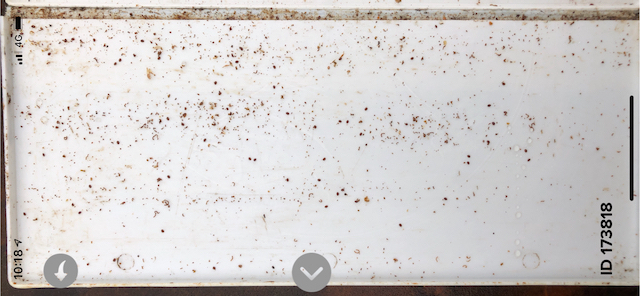Treat or not to treat?
What to do during the season if BeeScanning detects varroa? This is a common question. We are conducting a study to see if it makes sense to treat with oxalic acid dripping when there are still brood. Results coming soon. On the tray above, in addition to the number of varroa, you can also reflect on the uneven distribution. It gives an indication that it is of great importance where in the colony you sample for shake tests or take pictures. It also indicates that with BeeScanning you get a better measure of the degree of attack with images from 3 brood frames, than with just a shake sample from one frame. Alternatively, you would need to shake bees from 3-4 frames, shuffle the bees and then sample 300 bees at random.
The fact that there is debris on the tray after 24 hours shows that there are hatching brood. The presence of pale varroa also shows that bees hatch that come out with unmature varroa.
Preliminary results show that treatment has a very good effect. One issue that we are investigating is the effect of repeated treatments. How effective is it and does it have any disadvantages. Which harms the bees the most? To let them have large amounts of mites during the season or to be exposed to repeated oxalic acid drops?


